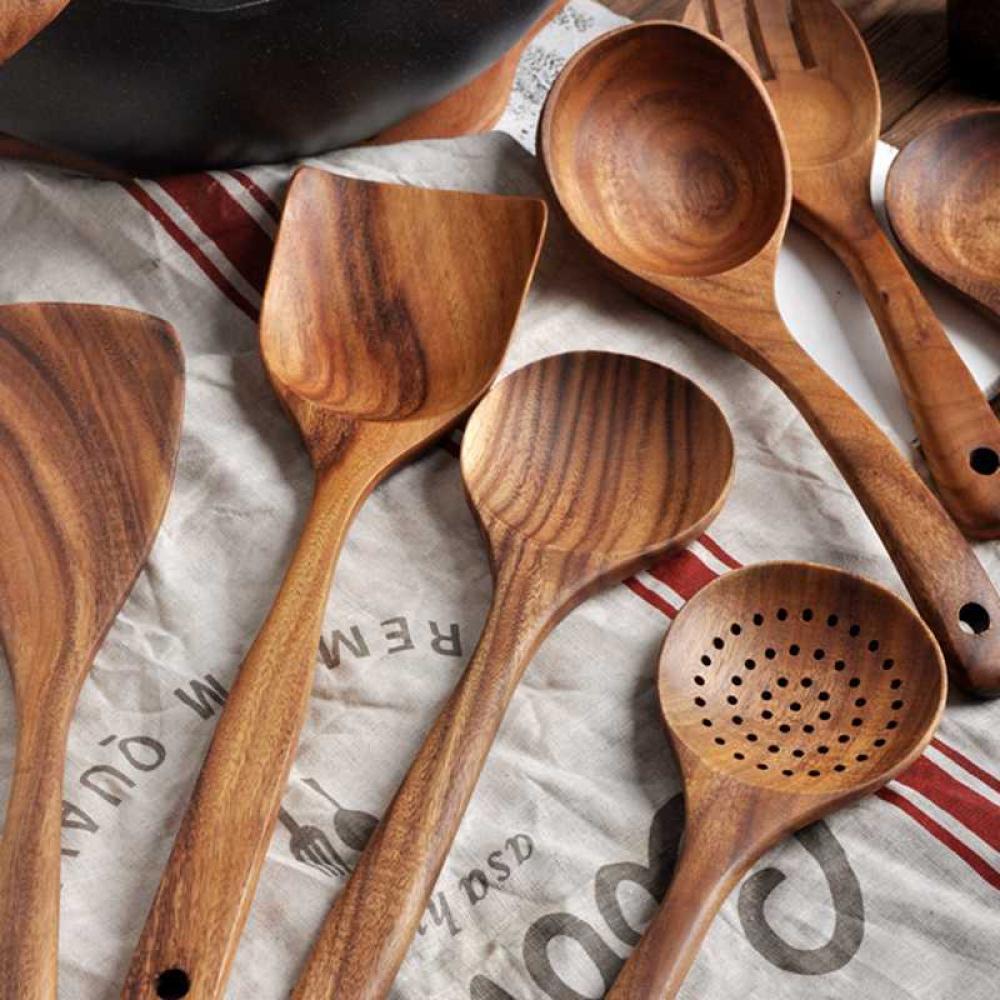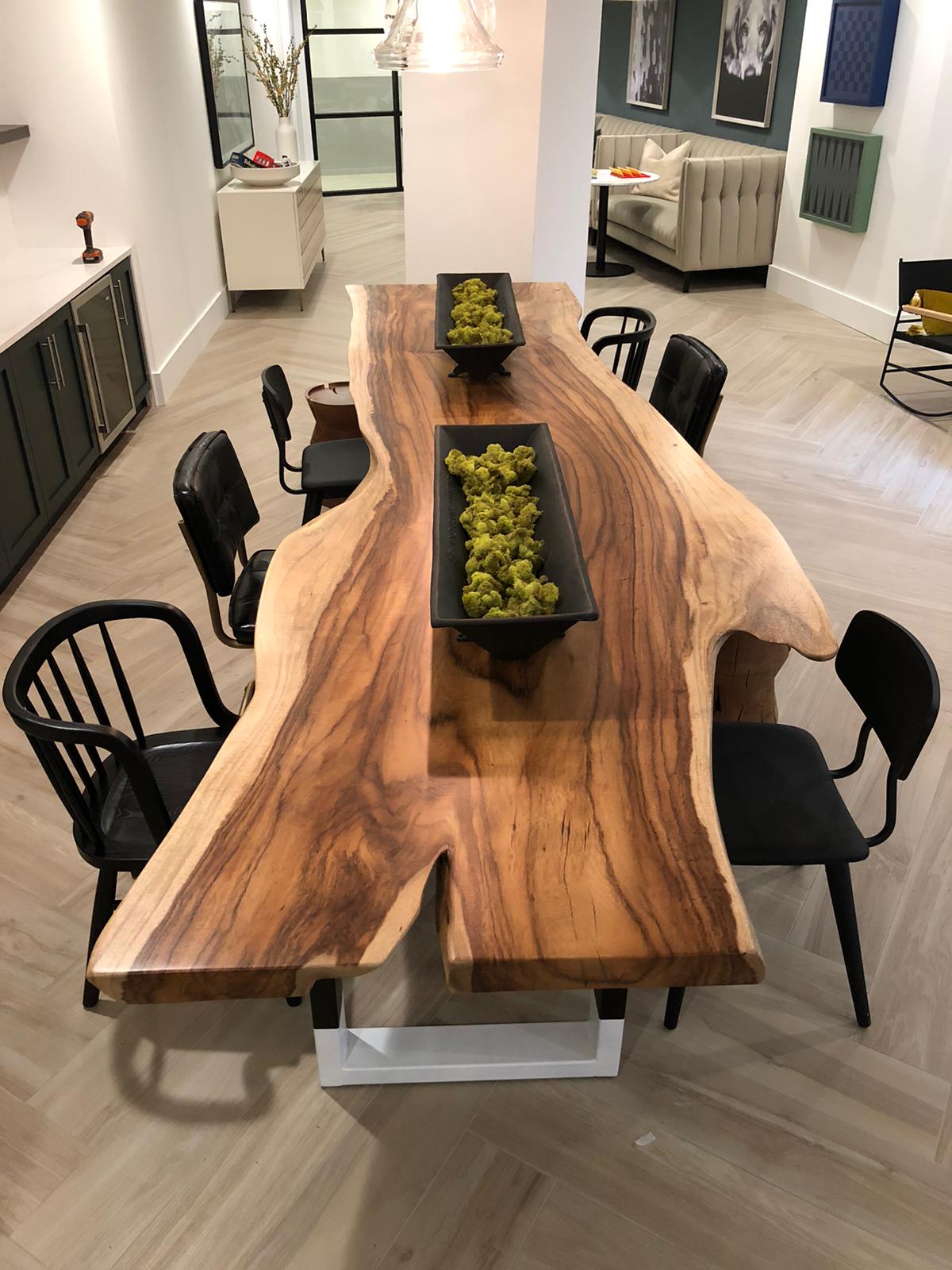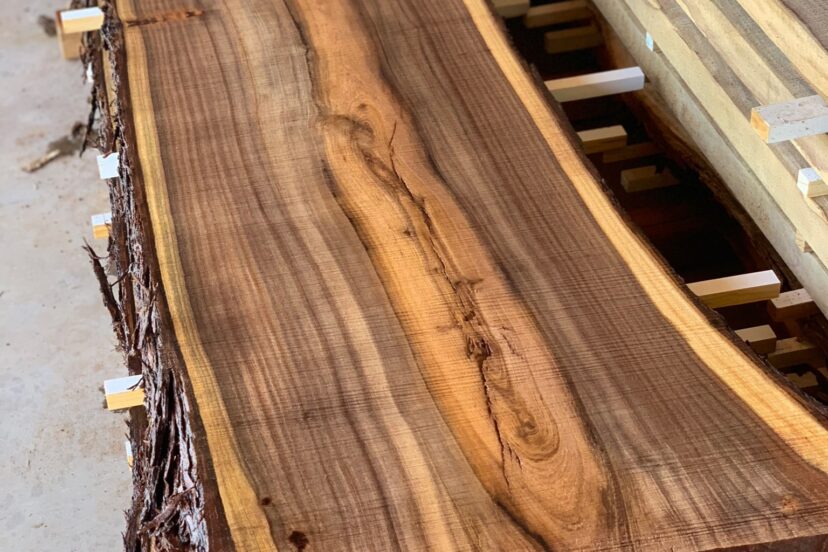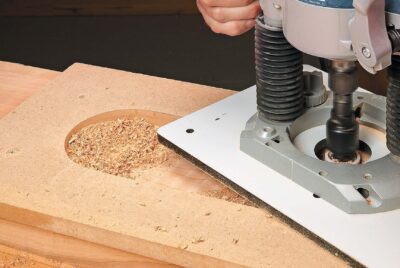Acacia Woodworking Guide: Techniques & Project Examples
When you’re considering a new woodworking project, the choice of wood is critical. Acacia wood, with its durability and natural beauty, is an excellent candidate for a variety of creations. Let’s dive into the wonders of acacia and discover how to make the most of this versatile wood in your projects.
Acacia’s tight grain and rich colors, ranging from golden browns to deeper reds, not only make it visually appealing but also provide a sturdy foundation for your work. The wood’s inherent qualities, like its resistance to water and decay, open up a world of possibilities, from outdoor furniture to elegant kitchenware. But before we get ahead of ourselves, let’s understand what makes acacia such a remarkable choice for woodworking.
Key Takeaways
- Acacia wood is highly durable and water-resistant, ideal for both indoor and outdoor projects.
- The wood’s varied color palette and grain pattern offer aesthetic appeal and unique design opportunities.
- Preparation of acacia, including cutting and sanding, is crucial for a smooth working process and a polished end product.
- Joinery techniques can be effectively applied to acacia wood to create strong and lasting bonds.
- Proper finishing, maintenance, and care will ensure that acacia wood projects retain their beauty and functionality over time.
Now, let’s get started on why acacia should be at the top of your list for your next woodworking venture.
Why Choose Acacia for Your Woodworking Projects?
Acacia wood isn’t just another type of timber; it’s a choice that brings with it a host of benefits. Its natural resistance to the elements makes it perfect for that outdoor patio set you’ve been dreaming of. Inside the home, its strength and durability mean that your crafted pieces will stand the test of time, even under heavy use. And for those who love a good visual impact, the varied shades of acacia wood allow for a range of tones in your final piece, ensuring that no two projects look exactly the same.
Qualities of Acacia That Enhance Woodcraft
Working with acacia wood is a joy because of its many favorable properties. Here’s what you’re looking at:
- Hardness: Acacia is known for its hardness, which not only means it’s durable but also that it can handle fine details without chipping.
- Grain: The wood’s grain is tight and smooth, allowing for a fine finish that’s both tactile and visually appealing.
- Color: The natural hues of acacia range from warm browns to rich reds, providing plenty of options for your design palette.
- Resistance: Acacia stands up well to moisture and decay, making it an ideal choice for outdoor furniture and kitchen implements.
But with these great features, comes the need for some know-how. Let’s look at some popular projects that acacia wood is perfectly suited for.
Popular Projects Suited for Acacia Wood
Considering acacia’s strengths, there are some projects that it’s particularly well-suited for:
- Outdoor Furniture: Its resistance to the elements means your garden benches and tables will last through the seasons.
- Hardwood Floors: Acacia’s durability makes it a smart choice for flooring that’s as tough as it is beautiful.
- Decorative Carvings: The wood’s hardness allows for intricate carving work, perfect for decorative pieces or detailed furniture accents.
- Functional Kitchenware: Acacia’s resistance to water and bacteria makes it a hygienic option for cutting boards and serving platters.
With these ideas in mind, let’s move on to the nuts and bolts of working with acacia wood.
Getting Started with Acacia Woodworking
Before you start sawing and sanding, it’s important to choose the right type of acacia wood for your project. Whether you’re building a robust outdoor bench or a delicate jewelry box, selecting the appropriate wood is the first step to ensuring your project’s success. For more detailed guidance on setting up your space and selecting tools, consider exploring this comprehensive guide on the woodworking shop.
Selecting the Right Acacia Wood for Your Project
When selecting acacia wood, consider the following:
- Color and Grain: Each piece of acacia wood has its own unique pattern and color. Think about how these natural aesthetics will play into your project’s design.
- Size and Shape: Depending on your project, you’ll need to select wood pieces that are the appropriate size and shape. Remember, it’s always better to start with a piece that’s a bit larger than you think you’ll need.
- Condition: Look for wood that’s free from cracks and warping. This will save you time and effort in the long run.
Once you’ve got your wood picked out, it’s time to understand its characteristics a bit better.
Understanding Acacia’s Grain and Texture
Acacia’s grain can be both a blessing and a challenge. Its tightness gives it a smooth finish, but it also means you’ll need to pay attention when cutting to avoid splintering. Always cut in the direction of the grain, and use sharp, high-quality tools to get the cleanest cuts. Remember, a well-maintained blade is a woodworker’s best friend, especially when working with hard, dense woods like acacia.
In the next part, we’ll delve into the basic woodworking techniques that will help you make the most of acacia’s potential. Stay tuned as we cover everything from cutting and sanding to joinery and finishing touches.
Preparation: Cutting and Sanding Basics
Prepping acacia wood properly is crucial for a successful project. Start by ensuring your wood is flat and free from any twists or warps. A planer or jointer can be invaluable here. Next, mark your cuts using a sharp pencil or marking knife for precision. When you’re ready to cut, use a sharp saw blade to reduce tear-out, which is when the wood fibers get pulled up during a cut. Remember, the sharper the blade, the cleaner the cut.
Once you’ve made your cuts, it’s time to sand. Begin with a coarser grit to remove any saw marks or imperfections and gradually work your way up to a finer grit for a silky-smooth finish. Sanding with the grain will give you the best results. A random orbital sander can save time and effort, but hand sanding will give you the most control, especially for those intricate areas.
Joinery: Techniques for Strong Bonds
Strong joinery is the backbone of any woodworking project. With acacia, you have several options to create robust and lasting joints. Here are some of the most effective techniques:
- Dowels: For a simple and strong joint, dowels can be your go-to. They’re great for joining boards at right angles.
- Mortise and Tenon: This classic joinery technique is time-tested and perfect for acacia. It creates an incredibly strong connection, ideal for tables and chairs.
- Dovetails: A hallmark of fine craftsmanship, dovetail joints are not only strong but also visually stunning. They’re perfect for drawers and boxes.
Regardless of the joinery method you choose, always make sure to use a waterproof glue when working with acacia, especially if the final piece will be used outdoors. This will ensure your joints hold up against the elements. Learn more about woodworking joints to improve your technique.
Advancing Your Acacia Woodwork
Once you’ve mastered the basics of working with acacia wood, you can start to explore more advanced techniques. These will allow you to add a professional touch to your projects and truly make them stand out.
But first, let’s talk about how to protect and enhance the natural beauty of your acacia wood creations.
Finishing Acacia: Sealants and Stains
Finishing your acacia wood project is essential for both protection and aesthetics. Start by choosing a finish that complements the natural color of the wood. A clear sealant will protect the wood while allowing its natural beauty to shine through. If you want to enhance or slightly change the color, a stain can be applied before sealing. Apply the stain with a brush or rag, working with the grain, and wipe away any excess.
For outdoor projects, a sealant that offers UV protection will help prevent the wood from fading. And don’t forget, regular maintenance, like a fresh coat of sealant every few years, will keep your acacia wood looking great for a long time.
Carving with Acacia: Tools and Tips
Carving acacia wood can be a rewarding experience due to its hardness and grain. For detailed work, use sharp chisels and gouges. Keep your tools sharp; acacia’s hardness can dull edges quickly. Carve with the grain to avoid unwanted splitting and start with shallow cuts, gradually deepening them to achieve the desired effect.
Remember, patience is key with carving. Rushing can lead to mistakes that are hard to fix. Take your time and enjoy the process of revealing the design within the wood.
Acacia Project Showcase
Now, let’s look at some specific project ideas that are perfect for acacia wood. These examples will not only inspire you but also show off the versatility of this fantastic material.
Durable Outdoor Furniture from Acacia
Acacia’s resistance to the elements makes it ideal for outdoor furniture. Imagine crafting a sturdy garden bench or an elegant patio dining set. These pieces will withstand the weather and age beautifully, developing a patina that adds character over time. With proper joinery and finishing, your outdoor acacia furniture will be the centerpiece of many gatherings for years to come.

Elegant Acacia Cutting Boards and Kitchenware
Acacia’s natural resistance to bacteria and water makes it perfect for kitchenware. Crafting a cutting board from acacia not only gives you a functional tool but also a work of art. With its rich colors and unique grain patterns, an acacia cutting board can double as a serving platter, making it a versatile addition to your kitchen.
For example, a simple yet elegant acacia cutting board can be created by selecting a piece with an interesting grain pattern, sanding it smooth, and finishing it with food-safe mineral oil to bring out the wood’s natural colors and ensure durability.
But the beauty of acacia isn’t just in its durability; it’s also in how it allows you to create pieces that tell a story. Every mark of the grain, every shade of brown or red, speaks to the life of the tree from which it came. And by crafting with acacia, you become a part of that story.
In the next section, we’ll explore how to care for your acacia wood projects to ensure they remain as beautiful as the day you finished them. From maintenance tips to repair techniques, you’ll learn how to keep your acacia wood in top condition.
Repairing and Restoring Acacia Wood Items
Acacia wood, while durable, can still suffer from scratches, dents, or water damage over time. The good news is that it can often be repaired to look as good as new. Start by cleaning the area with a mild detergent and water, then sanding it down lightly with fine-grain sandpaper. For deeper scratches or gouges, wood filler that matches the color of your acacia can be applied. Once it’s dry, sand the area again and finish with a sealant for protection.
For water stains, you can use a mixture of vinegar and olive oil rubbed into the stain with a soft cloth. The key is to work gently and patiently, allowing the natural beauty of the wood to be restored without causing further damage.
If your acacia wood has suffered more serious damage, like cracking or splitting, it might be time to consult a professional. They can often perform miracles with wood restoration and save you from having to replace a cherished piece.
Remember, regular maintenance can prevent many of these issues from occurring in the first place. Treat your acacia wood items with care, and they will last for generations.
Final Thoughts on Acacia Woodworking
By understanding and respecting the nature of acacia wood, you can ensure that your handcrafted pieces endure beautifully, becoming timeless treasures in your home or workspace.

FAQs On Acacia Woodworking
As you embark on your journey with acacia woodworking, questions are bound to arise. Let’s tackle some of the most common queries to ensure you’re well-prepared for your next project.
Is Acacia Wood Suitable for Beginners in Woodworking?
Yes, acacia wood is a great choice for beginners. Its durability means that it’s forgiving to work with, and the tight grain makes it easier to achieve a smooth finish. However, its hardness can require a bit more effort when cutting and sanding, so be sure to use sharp tools and have patience as you learn.
Starting with a simple project, like a small box or a basic cutting board, can help you get a feel for the wood without becoming overwhelmed. As you gain confidence and experience, you can tackle more complex projects.
How Does Acacia Wood React to Different Climates?
Acacia wood is well-suited to a variety of climates due to its natural resistance to moisture and decay. However, like all wood, it can expand and contract with changes in humidity and temperature. To minimize this, it’s important to properly seal your acacia wood items, especially if they’ll be used outdoors.
Can Acacia Wood Be Used for Carving Detailed Designs?
Acacia’s hardness makes it an excellent choice for carving detailed designs. Its tight grain provides a smooth surface for intricate work. However, because of its density, sharp tools and a steady hand are necessary. Start with simpler designs and as your skill improves, so too will the complexity of your carvings.
What Are the Best Finishes to Use on Acacia Wood?
The best finishes for acacia wood will depend on the intended use of the item. For outdoor furniture, a finish with UV protection is ideal. For indoor items, like dining tables or cutting boards, food-safe mineral oil or a butcher block conditioner can enhance the wood’s natural beauty and provide protection. Always test the finish on a small, inconspicuous area first to ensure it gives the desired effect.
Regardless of the finish you choose, applying it properly is key. Thin, even coats with adequate drying time in between will yield the best results.
How Do You Prevent Acacia Wood from Cracking Over Time?
To prevent acacia wood from cracking, it’s important to maintain a consistent humidity level where the wood is kept. Avoid placing acacia wood items near heat sources or in direct sunlight, as this can cause the wood to dry out and crack. Regularly applying a sealant can also help to lock in moisture and protect the wood from environmental changes.
If you’re making outdoor furniture, consider designing it with slight gaps to accommodate wood expansion and contraction. This foresight can prevent cracking and splitting as the wood responds to outdoor conditions.
Where can I learn more about acacia woodworking and other projects?
· Here’s a great place to learn more about woodworking ideas and plans.




